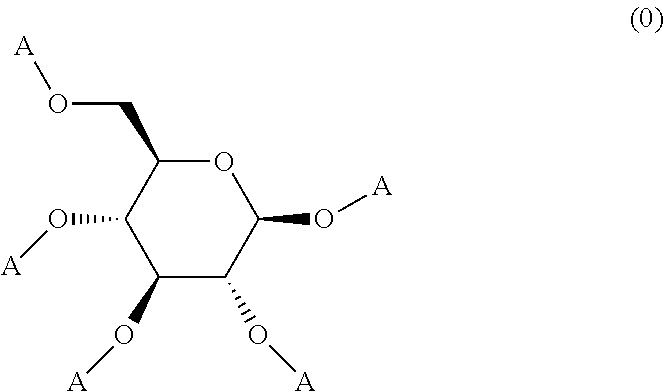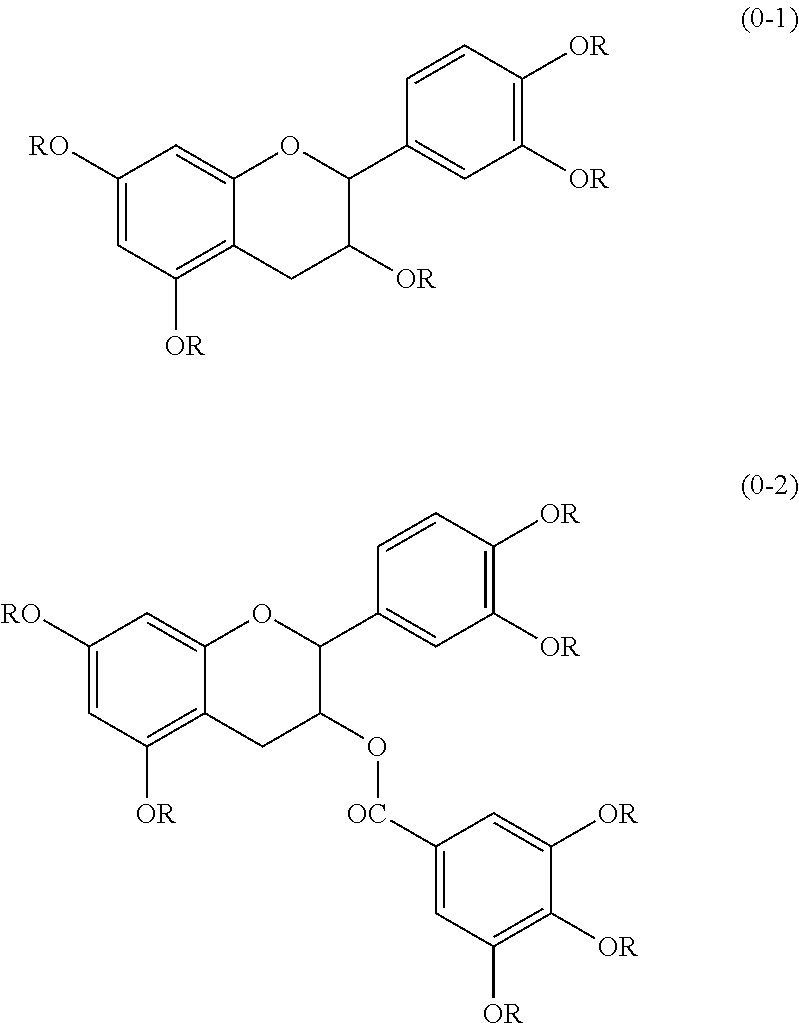Resist composition and pattern formation method using same, compound and resin
- Summary
- Abstract
- Description
- Claims
- Application Information
AI Technical Summary
Benefits of technology
Problems solved by technology
Method used
Image
Examples
examples
[0231]The present invention will be more specifically described with reference to examples below. However, the present invention is not limited to these examples.
[0232]Below, methods for measuring a compound and methods for evaluating resist performance and the like in examples are presented.
[Measurement Method]
(1) Structure of Compound
[0233]The structure of the compound was verified by carrying out 1H-NMR measurement under the following conditions using “Advance 600 II spectrometer” manufactured by Bruker.
[0234]Frequency: 400 MHz
[0235]Solvent: d6-DMSO
[0236]Internal standard: TMS
[0237]Measurement temperature: 23° C.
[Evaluation Method]
(1) Safe Solvent Solubility Test of Compound
[0238]The solubility of the compound in propylene glycol monomethyl ether acetate (PGMEA) was evaluated according to the following criteria utilizing the amount of dissolution in PGMEA. The amount of dissolution was measured at 23° C. by precisely weighing the compound into a test tube, adding PGMEA so as to a...
synthesis examples
Synthesis Example 1
Synthesis of TNA-ADBAC
[0251]In a container (internal capacity: 200 mL) equipped with a stirrer, a condenser tube, and a burette, 3.9 g (2.3 mmol) of tannic acid (TNA), 0.30 g (22 mmol) of potassium carbonate, and 0.64 g (2 mmol) of tetrabutyl ammonium bromide were dissolved in 50 mL of N-methylpyrrolidone, and the solution was stirred for 2 hours. After stirring, 13.2 g (46 mmol) of bromoacetic acid-2-methyladamantan-2-yl was added thereto, and the mixture was reacted at 100° C. for 24 hours. After the reaction terminated, the reaction mixture was dropped to a 1 N aqueous hydrochloric acid solution, and the resulting black solid was filtered off and separated and purified by column chromatography to obtain 7.8 g of the objective compound represented by the following formula (TNA-ADBAC).
[0252]The following peaks were found by NMR measurement performed on the obtained compound (TNA-ADBAC) under the above measurement conditions, and the compound was confirmed to have...
synthesis example 2
Synthesis of TNA-ADBAC100
[0256]In a container (internal capacity: 100 mL) equipped with a stirrer, a condenser tube, and a burette, 1.7 g (1 mmol) of tannic acid (TNA), 3.46 g (25 mmol) of potassium carbonate, and 2.437 g (7.56 mmol) of tetrabutyl ammonium bromide were dissolved in 25 mL of N-methylpyrrolidone, and the solution was stirred for 2 hours. After stirring, 9.01 g (31.4 mmol) of bromoacetic acid-2-methyladamantan-2-yl was added thereto, and the mixture was reacted at 100° C. for 24 hours. After the reaction terminated, the reaction mixture was dropped to a 1 N aqueous hydrochloric acid solution, and the resulting black solid was filtered off and separated and purified by column chromatography to obtain 1.01 g of the objective compound represented by the following formula (TNA-ADBAC100).
[0257]The following peaks were found by NMR measurement performed on the obtained compound (TNA-ADBAC100) under the above measurement conditions, and the compound was confirmed to have a ch...
PUM
| Property | Measurement | Unit |
|---|---|---|
| Current | aaaaa | aaaaa |
| Composition | aaaaa | aaaaa |
| Acidity | aaaaa | aaaaa |
Abstract
Description
Claims
Application Information
 Login to View More
Login to View More - R&D
- Intellectual Property
- Life Sciences
- Materials
- Tech Scout
- Unparalleled Data Quality
- Higher Quality Content
- 60% Fewer Hallucinations
Browse by: Latest US Patents, China's latest patents, Technical Efficacy Thesaurus, Application Domain, Technology Topic, Popular Technical Reports.
© 2025 PatSnap. All rights reserved.Legal|Privacy policy|Modern Slavery Act Transparency Statement|Sitemap|About US| Contact US: help@patsnap.com



